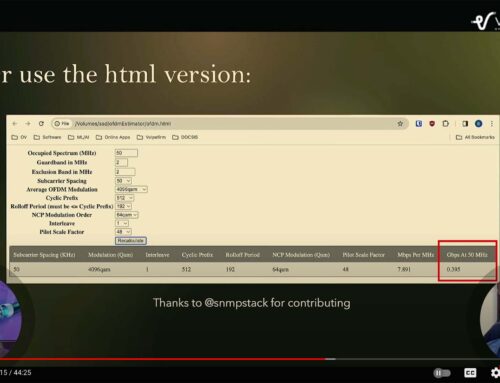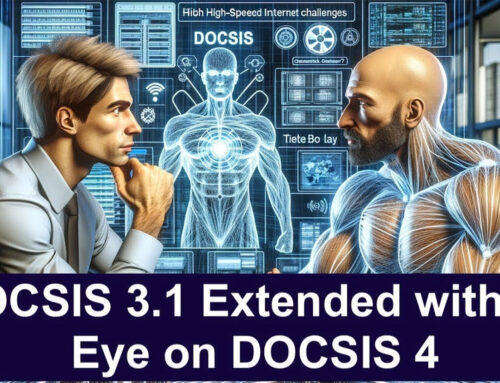How DOCSIS Revolutionized the Cable Industry
The cable industry is constantly facing competitive threats from companies like Google and Verizon who up the data speed game with fiber optic cable. They compete by offering higher and higher data speeds at lower and lower prices. But before we get into that, let’s look back at the 20 years of DOCSIS history and how DOCSIS has revolutionized the cable industry.
Google Fiber Expansion (Source: Google.com)
20 Years Ago – The Internet Emerges
The year was 1996. Broadband Library was celebrating its first birthday after rebranding from Literature Library. ARPANET(Advanced Research Projects Agency Network a US DoD United States Department of Defense government agency) was decommissioned in 1990 giving way to the commercialization of the Internet. So there you have it, US DoD government geeks invented the early framework of internet, not anyone else who claims to have done it. During the 1990’s it was estimated that Internet traffic grew by 100% each year[1], but by 1996 only 0.9% of the World’s 6.5 Billion people were using the Internet.[2] Most people were confused by the terms “www” and “.com”. Dial-up modems were common for those of us in the know (geeks by any other name). Even the best dial-up modems were limited to 56 kbps. Yes, that is not a typo, but terms that may be more applicable to modern eyes this would be 0.056 Mbps. Your modem made a lot of noise back then too when hooking up to the internet, beeping, harsh noises, shrieking and other odd tones. As a result you also tied up your phone line(now referred to as a landline) because cell phones were not common yet, dial the digits of your local Internet Service Provider (ISP) such as America Online (AOL) to get on the internet. AOL was a major player in providing internet services to millions of Americans and much respected in 1996 – hence the expression ‘You’ve Got Mail’ came from AOL.
- Dial-up Modem (56 kbps – 0.056 Mbps)
- (By Michael Pereckas from Milwaukee, WI, USA (Smartmodem) [CC BY-SA 2.0 (http://creativecommons.org/licenses/by-sa/2.0)], via Wikimedia Commons
Consumers then got a second choice over dial-up if they were within reach of a Digital Subscriber Line Access Multiplexer (DSLAM), they could get Digital Subscriber Line (DSL) offered by telecom operators. These speeds were typically 4x or more than that of dial-up modems. Further, DSL modems often could co-exists with subscriber phone lines, meaning the DSL modems could be online for long periods of time without impacting the rest of the family. For example with dial-up if your mom lifted the handset to call someone your Internet connection was lost, along with whatever you were doing. Co-existence was hard for dial-up users. We were banned to basements and late hours to get online.
DSL meant a new revenue stream for telecom operators too. The Internet was growing rapidly. New services were occurring on the Internet, like Napster (June 1999), which allowed users to download songs on the Internet. Online game playing started to become very popular during the late 1990’s and early 2000’s. At the same time a number of companies and individuals were using Voice-over-IP to communicate on the early Internet. In 1996 the International Telecommunications Union (ITU) came out with its H.323 standard for VoIP[3] and the Session Initiation Protocol (SIP) specification RFC 2543 was released in 1999.[4] This does not include the long forgotten companies that used non-standards-based protocols allowing voice-over-IP in the early Internet days, when many of us used headphones repeating over and over again, “Can you hear me now?”. Yes, I repeatedly said these famous words, over and over again until my girlfriend yelled, “Yes! Stop saying that”. Of course, I wasn’t talking to her from the bedroom into the living room. I was talking to my gaming friends online. Verizon, I beat you to it. I also kept saying it. Communication during the multi-player game of Tribes was the key to success.
While telecom operators were driving users towards DSL and vDSL (vDSL was just very fast DSL), a number of innovative companies realized that the coax cable could be used to deliver faster data than twisted pair phone lines, which was used for DSL.
Cable Modems Get Standards – Aka DOCSIS
While the first recorded cable modem trial was performed by MITRE Cablenet in 1979, it was really just a science experiment, but did reach speed of 307.2 kbps.[5] It was not until the mid-1990’s when proprietary cable modem systems from historically famous companies like Lan City, Com21, Zenith homeworks and more created both the cable modem and the cable modem termination system (CMTS). The challenge for cable operators is that if you bought a CMTS from one of these vendors you also were required to purchase all of your modems from them as well. This is because they were proprietary systems (non-standards-based).
Through a longer story emerged CableLabs and the first Data-over-Cable Interface Specification (DOCSIS), which was released in March of 1997. DOCSIS provided a set of specifications for vendors to design CMTSs and cable modems that would be interoperable. To cable operators and the cable industry this meant we could buy CMTSs from one vendor and modems from another – this resulted in competition, lower costs and innovation.
Further, the specification enabled up to 37 Mbps net throughput in the downstream and 8 Mbps (net) in the upstream. Cable modems were always on, so dialing up was no longer necessary and the modems did not tie up existing phone lines. The speed was unprecedented and always-on modem capability meant that a user could walk up to their computer and instantly access the Internet. It was amazing!
DOCSIS and cable modem technology changed everything for the cable industry. Suddenly we went from video only content providers to providers of the Internet too.
Providing subscribers with access to the Internet in the late 1990’s and early 2000’s must not be trivialized. Stop for a minute and think to yourself, “Where would the cable industry be today were it not for DOCSIS? What if cable networks were not capable of distributing data?”
While a rhetorical question, it shutters one to think of the consequences. For many cable operators today a significant percentage of their revenue is derived directly from DOCSIS data subscribers. While video was the technology that built the cable industry, data is what drives it. Also, what if we only had to rely on DSL and dial-up. There was no competition to the Telco’s if not for DOCSIS. Innovation would have been slow and so would be your Internet speeds.
Telco’s really began feeling the squeeze and would advertise that cable wasn’t as good as DSL. They came out with ads which highlighted cable hogs (internet usage / capacity issues) – check out the funny “Cable Hog” video here circa 2000.
DOCSIS Gets Quality of Service
Just two years after the DOCSIS 1.0 specification was completed, a new DOCSIS specification was released to add quality of service (QoS) in April 1999. This was the DOCSIS 1.1 specification. DOCSIS 1.1 did not increase upstream or downstream speed, it did improve the baseline privacy interface specification (BPI+), so historically most people forget about how important the DOCSIS 1.1 specification was to our industry. The key advancement in the DOCSIS 1.1 specification was adding the ability to prioritize one type of traffic over another.
Remember the timing. In the later 1990’s a number of organizations were experimenting with how they could transmit voice traffic over Internet. This was huge. If only cable operators could compete directly against telecom operators in the telephony space this would be something called The Triple Play. Cable operators would be able to sell video, data and voice directly to their subscribers, something never before possible in the history of cable. The DOCSIS 1.1 specification made this possible, along with another CableLabs specification called PacketCable. By prioritizing voice-over-Internet Protocol (VoIP) traffic, DOCSIS 1.1 CMTSs and cable modems pitted cable operators directly against telecom operators in a heated battle. The game was on and has never ceased since.
So the next time you throw that DOCSIS 1.1 CMTS into the trash, do so with some dignified respect. It earned its place in history. Also, when you see that your cable modems are registered as DOC1.1 cable modems – that’s a good thing. It means they are ready to support the highest level of quality of service that our DOCSIS networks currently provide.
DOCSIS Get’s a Little Faster and Resilient
It was not until December 2001 when the next DOCSIS specification was released – nearly two and half years later. This next release packed in a lot of features focused on the upstream. Specifically, the specification increased the maximum upstream transmit speed from 8 Mbps (net) to 27 Mbps (net) – over a 3x increase! Additionally it added a number of enhancements for combating upstream impairments such as ingress cancellation, dynamic interleaving (for impulse noise) and S-CDMA.
By the early 2000’s there was every increasing pressure by telecom operators and cable operators to provide ever increasing speeds due to concerns of peer-to-peer (P2P) file sharing. P2P file sharing was first popularized in 1999 by a company called Napster. Napster was focused on allowing its users to share music files. Ultimately Napster was shut down in July 2001 due to copyright infringement[6], but it is quickly replaced with more secure and distributed services such as Kazaa and the still present BitTorrent.
Filesharing services and VoIP presented a challenge to all data providers because it is was symmetrical. Downstream and upstream data was nearly the same. The concern for cable operators was that if it became radically popular amongst their subscriber, then their upstream networks would need to support the same bandwidth as their downstream. DOCSIS 2.0 took great lengths to make this possible. It was not enough to just add 64-QAM and a wider bandwidth (6.4 MHz upstream channel) in the upstream, but the specification also needed to add robust features to help cable modems and the CMTS support a 64-QAM, 6.4 MHz upstream channel in the presence to significant impairments that are all too common in nearly every cable operator’s upstream.
Because of the DOCSIS 2.0 specification, we have some very valuable features in our DOCSIS network that we take advantage of even today. Two features that are almost always forgotten about are ingress cancellation and dynamic interleaving. Ingress cancellation is in the CMTS and can very quickly detect one or multiple interfering narrow channel ingress signals unders the upstream QAM channel and digitally eliminate them. In most CMTSs it is enabled by default, so we often do not notice narrowband interferers under our DOCSIS channels. Dynamic Interleaving is enabled in the CMTS modulation profiles and helps mitigate against bursty noise in the upstream.
Another very important feature that was improved was pre-equalization in the cable modem. While this was originally added in DOCSIS 1.1, it was not well defined in the 1.1 specification. The DOCSIS 2.0 specification created a 24-tap equalizer, clearly defined the main tap at position eight and this became the baseline for the much of the work now done in proactive network maintenance (PNM).
Thanks to these features from the DOCSIS 2.0 specification we are able to run 64-QAM in many upstream networks that we previously were not able to run. While P2P file sharing still exists, it never grew into the mass adoption problem that we thought it would become. If only we could say the same about over the top video…
DOCSIS 3.0 – Video Goes Over the Top
It took nearly five years before the next DOCSIS specification was released – DOCSIS 3.0 was released in August 2006. This specification addressed two primary issues: 1) massive speed and 2) needed IPv6 addresses.
Internet Protocol version 4 (IPv4) has been around since 1981, but only provides for just under 4.3 Billion IP addresses. That seems like a lot of IP addresses, but as our World population tops 7.4 Billion people and we are quickly getting more devices than people, IPv4 is not holding up. The standard replacing IPv4 is IPv6, which supports 3.4×1038 IP addresses. That is a lot of IP addresses, so many that I can’t even pronounce a number that large… But now DOCSIS 3.0 supports it.
IPv6 is not the big bang in DOCSIS 3.0. It’s channel bonding. Channel bonding allows the CMTS and cable modems to combine more than one QAM channel into a logical group for sending and receiving data. The benefit is that a DOCSIS 3.0 CMTS and cable modem can, at a minimum, transmit four times the data of a DOCSIS 2.0 CMTS. More advanced modems enable 16, 24 or even 32 channels to be bonded in the downstream. It is common for cable operators to run 16 or 24 bonded channels in the downstream with 3, 4 or even 8 bonded channels in the upstream.
The fears of P2P file sharing returned with a vengeance in the form of over-the-top (OTT) video. OTT video has driven substantial subscriber data traffic demand, growing 50% per year on average. Subscribers are asking for higher and higher speed tiers (25 Mbps and higher) and subscribers are using more traffic during peak hours especially due to binge watching of OTT video from services like Netflix, Hulu and Amazon.
Further, by 2010 there was every increasing pressure on telecom operators and cable operators to provide ever increasing speeds. This was due primarily to OTT video, FaceBook, YouTube and more and more regular people using the Internet. The internet had crossed over from just being something early adopters, geeks and college students used, to something everyday people were using. The Internet had now become integrated into society. Using the Internet had become just as ordinary as watching TV, in fact for many the Internet had replaced TV. DOCSIS 3.0 came just in time to help cable operators keep up and stay competitive.
Fiber Rich vs. Coax
On December 12, 2012 Google executive chairman Eric Schmidt stated “It’s actually not an experiment, we’re actually running it as a business,” [7] when talking about the first Google Fiber deployment in Kansas City. As of Oct 2015, Google FIber has an estimated 120,000 customers with deployments in process in eight major cities. [8][9] Google Fiber’s plan – provide 1 Gbps Internet for $70/month.
AT&T Uverse responds in select cities with GigaPower 300 and GigaPower 1G (300 Mbps and 1Gbps, respectively). Similarly, Verizon responds with fiber-to-the-home offering 1 Gbps service in select markets. At great expense the motto becomes “fight fiber with fiber”.
Released in October 2013 is the DOCSIS 3.1 specification offering up to 10 Gbps down and 1 Gbps up. DOCSIS 3.1 provides a competitive response to fiber, were plowing fiber to the home, thru a neighborhood, down a busy street is not realistic or a cost effective solution. Further it greatly extends the life of the existing hybrid fiber coax (HFC) plant where more data capacity is needed, but RF bandwidth is limited.
Again, DOCSIS in the face of competition and demand has breathed new life into the cable industry. Today cable operators have the luxury of choosing between deploying fiber or DOCSIS 3.0/3.1 as appropriate and possible for the market they are in. It is not an either or proposition because we are properly positioned and have the developed the internal expertise to compete on a level playing field with telecom operators, Google or Alphabet.
DOCSIS has not only kept us in the game, but helped us develop the skills necessary to compete in today’s modern data-centric world. “Where would the cable industry be today were it not for DOCSIS?”
Thank you DOCSIS and happy 20th birthday!
[1] https://en.wikipedia.org/wiki/Internet
[2] http://www.internetworldstats.com/emarketing.htm
[3] “H.323 Visual telephone systems and equipment for local area networks which provide a non-guaranteed quality of service”. ITU-T. Retrieved 2009-01-21
[4] “Prospects bright for voice calls over Internet”. Retrieved 2015-01-01
[5] ftp://ftp.rfc-editor.org/in-notes/ien/ien96.txt
[6] Napster’s High and Low Notes – Businessweek – August 14, 2000
[7] Copeland, Michael V. (2012-12-12). “Eric Schmidt Says Google Fiber Won’t Stop With Kansas City”. Wired.com. Retrieved 2015-06-04.
[8] Moritz, Scott (2015-03-17). “Google Fiber Ended 2014 With 29,867 TV Subs: Report – MultiChannel News”. Bloomberg.com. Retrieved 2015-06-04.
[9] Moritz, Scott (2015-10-17). “Study: Market ‘Too Dismissive’ of Google Fiber”. MultichannelNews.com. Retrieved 2015-06-04.
By Brady Volpe
As seen in Broadband Library







Leave a Reply